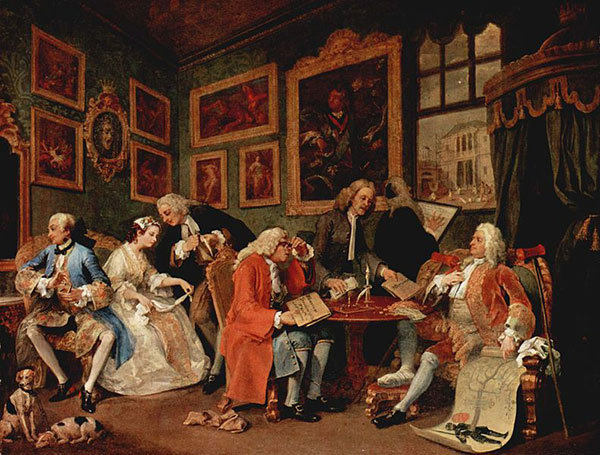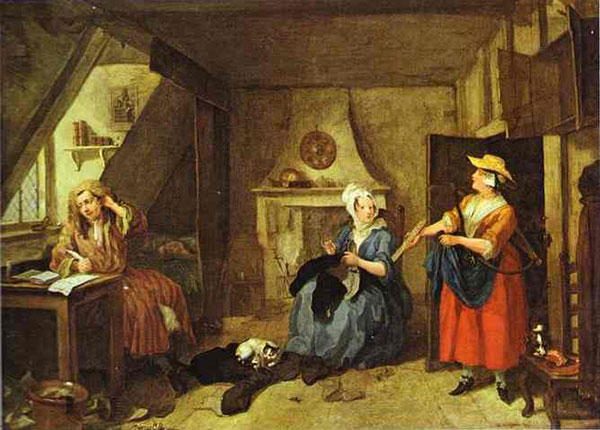A good number of years ago, when living on the East Coast, I spent leisure time during many a weekend wandering about flea markets that (for reasons I can’t explain) were ubiquitous at that time. I was looking, in a totally random way, for two things, old children’s books and British 18th-century prints.
The children’s books were relatively easy to find so in time I gathered a library of some three thousand books—from the 18th, 19th, and 20th centuries. Eventually, I gave all the books to the University of Connecticut’s collection of historical children’s books, where I assume they still are.
The 18th-century prints were something else. These prints, wildly popular in their day, fascinated and entertained me. The artists, Hogarth (1697–1764), Gillray (1756–1815), and Rowlandson (1757–1827), among others, created works that are rare and found only by luck. Hogarth, who was the most important painter and engraver of his day, created prints (often in series such as A Harlot’s Progress, and Marriage A‑la-Mode) ) that were novelesque in content.

His engravings are extraordinary for their vivid depictions of 18th-century London life and culture. In their day they were widely popular. Today you can enjoy them for their artistic skill and astonishing detail, which often tell a story of great depth and complexity. They are veritable encyclopedias of 18th-century England.
Hogarth’s prints were issued in many editions, often with minute changes which enrich or enhance the original work. [It takes an expert—which I am not—to date the sequence.]
Over time, I came to own a few of these prints by way of pure serendipity since I would never have been able to afford them from art dealers.
Over my writing desk, I have one such Hogarth print, which goes by the title “The Distrest Poet.” My copy is an early but revised work from (perhaps) about 1741.

It shows a writer at his desk in a messy one-room attic garret. He is depicted as desperately trying and failing to write something sellable, as a bucket (at his feet) of thrown-away pages can attest. The poet’s wife is sitting behind him repairing clothing. A crying (?) infant is in a bed. At the open door, a landlady is presenting an unpaid bill. A cupboard is open and is bare of food, even as a dog is gnawing on an old bone. On the wall, behind the poet, is a visual reference to Peruvian gold mines, the financial scam of the day. He is wearing a wig and on the floor is a sword both suggesting that the poet is a gentleman but, in all probability, his next residence will be a debtor’s prison.
All of this—and more—is visible, creating an unhappy but satirical portrayal of a writer’s life. Any working writer today will recognize the scene, and no doubt has lived it as well.
As I write—or try to write—I can and do glance up, to tell myself that the poet’s misery is both old and shared by many, many writers.
That said, in 1836, a young Charles Dickens was asked to add some text to just such a series of illustrations by the artist Robert Seymour. When Seymour died Dickens continued writing the text which became The Pickwick Papers, establishing Dickens as a hugely popular author, and creating the vogue for serialized fiction.
Happily (I like to remind myself) not all writers are distressed.
2 thoughts on “Art Prints That Are Novelesque in Content”
Thank you! I love the art. The characters and settings are so interesting and inspiring. It sets the imagination a‑whirr!
I love the idea that a picture can suggest a whole story, like the above one. I think it would take a very special artist to choose to paint that kind of scene.
What an interesting background to Pickwick Papers!